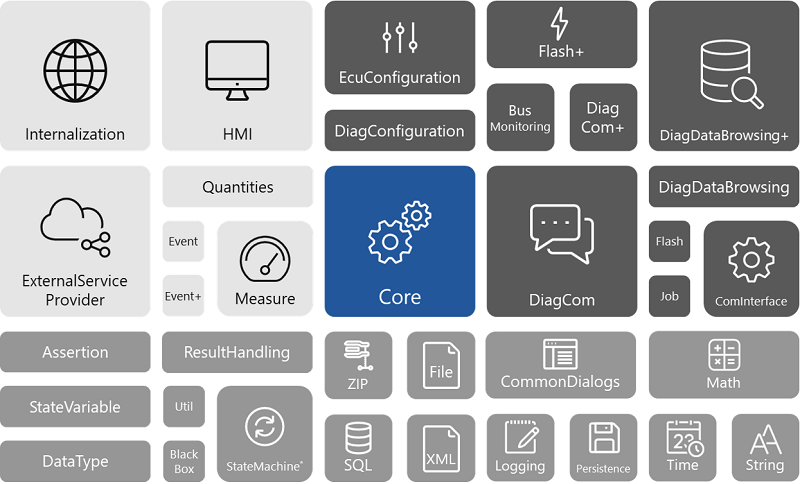 |
OTX Reference
|
|
 |
OTX Reference
|
|
OTX base library More...
Namespaces | |
| namespace | Actions |
| Lists all ActionRealisation extensions defined in the Core. | |
| namespace | DataTypes |
| Data types determine the value range of declarations. | |
| namespace | Declarations |
| General declarations | |
| namespace | Exceptions |
| Error handling. | |
| namespace | Nodes |
| OTX sequence (Flow) and nodes (Node) | |
| namespace | Signatures |
| Interface description (Signature) | |
| namespace | Terms |
| Lists all Terms defined in the Core. | |
| namespace | UniversalTypes |
| Commonly used types | |
| namespace | Variables |
| Variable Access. | |
Classes | |
| class | CheckerRule |
| Comprehensive checker rule listing More... | |
| class | Import |
| References to other OTX documents More... | |
| class | Otx |
| Document root More... | |
| class | Procedure |
| Executable part of an OTX document More... | |
| class | Validity |
| Boolean expressions to determine validity of elements More... | |
Enumerations | |
| enum class | Visibility { PRIVATE , PACKAGE , PUBLIC } |
| Visibility of global elements More... | |
OTX base library
The core library contains all activities for the general program logic, such as procedure calls, assignments, branches, loops, activities for parallel execution, and error handling. All OTX extensions add specific functions to the core, which is also capable of stand-alone execution, see Figure. In addition to extensions for vehicle diagnostics, HMI, and access to arbitrary external systems, there are numerous extensions that can map virtually any aspect for testing in the automotive industry.OTX is also readily expandable in compliance with standards. 
|
strong |
Visibility of global elements
In OTX, global elements such as procedures, signatures, global constants, context variables, state variables, document variables or validity terms are marked by a visibility attribute. Its value determines whether other documents may use the marked entity or not (e.g. call a procedure, use a validity term or read a global constant, etc.).